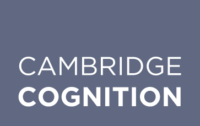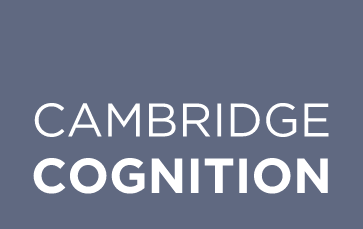
Core cognitive function
Why is cognitive assessment important in core cognitive function?

Why is it important to do research in core cognitive function?
Brain disorders are common, debilitating and economically crippling. Existing treatments often do not reverse underlying cognitive impairment or cannot be tolerated by patients. Our core cognition test battery incorporates the core cognitive domains often impaired in brain disorders, as well as those affected by cognitive enhancing drugs or interventions.
What is core cognitive function?
Cognitive functions are critical for everyday functioning, including in the workplace and social situations.
Problems with cognition are central to understanding psychiatric and neurological conditions across the lifespan. Examples include childhood-onset conditions such as Attention Deficit Hyperactivity Disorder (ADHD) or autism, conditions with onset in adolescence or early adulthood such as schizophrenia and depression, and disorders of older age including dementia.
In a given year, approximately one-third of the adult population will experience a brain disorder, but less than one-third of these individuals receive any form of treatment1,2.
Collectively, brain disorders represent a leading cause of morbidity across the globe, and this burden of disease is likely to increase over time3.
Treatments capable of reversing cognitive dysfunction in brain disorders can help maximise quality of life and everyday functioning for affected individuals, in turn minimising suffering and the economic impact of these illnesses.
Cognitive enhancement is also relevant in our daily lives, even in people without brain disorders. Caffeine consumption is an everyday occurrence in much of the world, and is used to regulate alertness and concentration, including in high-level athletes4. “Brain training” products are being investigated as a means of maintaining ‘brain health’ as we age5.
Certain conditions that cause cognitive dysfunction do have evidence-based treatments available. For example, ADHD can be successfully treated with psychostimulants or selective norepinephrine reuptake inhibitors such as atomoxetine. However, many people cannot take these medications due to intolerance or because of contraindications. Many other conditions, including schizophrenia and multiple sclerosis, do not have treatments that modify the underlying disease at all. This means that there is still a great need for novel interventions that can treat conditions with cognitive dysfunction.
Why it is important to do research in cognitive safety?
Cognitive impairment is increasingly recognised as an important potential adverse effect of medication. Medications can exert untoward cognitive effects both via direct effects on the brain (by crossing the blood-brain barrier) and via indirect actions (peripheral mechanisms in the body). However, many drug development programmes do not incorporate sensitive cognitive measurements.
This field is still at an early stage, and precisely what designs should be adopted, what outcome measures should be used, and what statistical approaches are most appropriate will vary depending on the drug in question and the indication.
Even if a drug is shown to induce some cognitive impairment, it might still be beneficial to prescribe it; but pharmaceutical companies, regulators, clinicians, and patients need to understand the possible cognitive risks and their implications for everyday function.
What is cognitive function?
Cognitive functions are vital for everyday functioning, including in the workplace and in social situations. They are especially crucial in safety-critical scenarios, such as when driving a car, or operating machinery.
Detection of negative cognitive effects of pharmaceutical interventions is of vital importance from the perspective of patients, clinicians, and the public. Cognitive Safety signals are also an increasing focus of regulatory agencies including the US Food and Drug Administration (FDA) and European Medicines Agency (EMA)1.
Assessment of the cognitive effects of medication is crucially important in drug development, licensing, and post-marketing surveillance. During drug development, objective measurement of cognitive effects can inform key decisions such as selection or rejection of compounds, choice of doses, and in support of the target indication(s).
Safety-relevant cognitive data are extremely valuable in support of regulatory submissions and drug differentiation claims. Testing for cognitive function, motor skills and mood has been highlighted by the FDA as being important when conducting clinical trials for medications suspected to impact brain function2.
Why is it important to do research in autism?
Individuals with autism spectrum disorder often exhibit cognitive deficits that reflect underlying abnormalities in brain structure and function5,6. Our recommended test battery for research of autism spectrum disorder’s assesses the core domains impaired in ASD, as well as those likely to be affected by novel interventions.
The search is on for treatments that can ameliorate the core symptoms of ASD, and cognitive impairment, in order to maximise long-term outcomes and quality of life for affected individuals.
What is autism?
Autism is a neurodevelopmental disorder associated with problems with social communication and/or interaction, and occurrences of restricted or repetitive patterns of behaviour, interests, or activities.
Autism was previously distinguished from Asperger’s syndrome, but the latest version of the Diagnostic and Statistical Manual (DSM-5) instead uses a broader ‘umbrella’ category of Autism Spectrum Disorder (ASD).
The condition affects approximately 1 in every 100 children. It is not fully known what causes autism but it is thought to include a mixture of environmental and genetic factors1.
The UK National Institute for Health and Care Excellence (NICE) has a number of guidelines regarding the recognition, diagnosis, and treatment of autism2-4. Generally speaking, people with autism should be supported via a multidisciplinary approach, by people with expertise in the disorder. This can involve support from clinical psychologists, nurses, occupational therapists, psychiatrists, social workers, speech and language therapists, and other support staff.
What is ADHD?
Attention-Deficit Hyperactivity Disorder (ADHD), otherwise known as hyperkinetic disorder, is a condition that affects people’s behaviour. ADHD can cause restlessness, trouble concentrating and impulsive behaviour1. For example, children with ADHD may blurt out answers in the classroom, fidget and find it impossible to keep still and struggle to focus on what a person is saying.
ADHD is the most common psychiatric disorder of childhood, affecting at least 5% of children globally. Symptoms persist into adulthood in up to 60% of childhood cases2.
For a diagnosis of ADHD to be given, the symptoms must be functionally impairing and occur in at least two distinct settings, for example at home and at school.
Considerable research has examined the long-term consequences of ADHD, highlighting its global importance for society. In a systematic review of the data, untreated ADHD was associated with poorer long-term outcomes across all categories considered: these included academic performance, job performance and employment status, self-esteem, quality of life, and risk of driving accidents3.
ADHD is a treatable psychiatric disorder, with medium to large effect sizes in terms of symptomatic improvement, versus control conditions, over the short-medium term4.
ADHD is often misdiagnosed, and is frequently comorbid with other mental (and physical health) disorders. First-line treatment options for ADHD can include consideration of psychotherapy and/or medication, but these should always be offered as part of a comprehensive package of care. The most appropriate treatment options and sequencing of treatment options can vary considerably depending on factors such as the age of the individual, severity of disease, and patient/family preference.
Why it is important to do research in ADHD?
The core symptoms of attention deficit disorders are cognitive in nature (inattention, hyperactivity, and/or impulsivity). These cognitive deficits often reflect underlying brain circuitry dysfunction (including prefrontal regions) and of neurochemical transmission, including the dopamine and noradrenaline/norepinephrine pathways5-9. Our recommended test battery for attention deficit disorders assesses the cognitive domains most likely to be impaired, as well as those likely to be affected by interventions.
How do you effectively assess core cognitive function?
The tests in this battery are sensitive to changes in cognitive function in health and disease across the lifespan, including deficits in common brain disorders and cognitive enhancing effects of novel interventions6-8. The battery is sensitive to the integrity of disease-relevant brain circuitry9-11 and is clinically relevant.
Our cognitive test batteries are quick to set up and simple to administer and have been recommended by our team of leading neuroscientists following peer-reviewed clinical research programmes.
Endpoints measured
Sustained attention
Episodic Memory
Processing speed
Working memory
Pathology and functional impact of cognitive dysfunction
Translational research using animal models, neuroimaging, and objective neuropsychological tests, indicates that multiple distinct cognitive abilities exist, which are dependent on the integrity and functioning of particular circuitry within the brain. In turn, these circuits are regulated by neuromodulators.
Of several hundred chemicals identified in the human brain, only a handful of these appear to be important regulators of cognition12. Key examples of these so-termed neuromodulators include serotonin, noradrenaline/norepinephrine, dopamine, acetylcholine, adenosine, and glutamate.
Psychoactive substances used by a considerable proportion of the population affect some of these brain systems – for example, caffeine exerts its cognitive effects mostly by antagonising brain adenosine receptors4. Even medications that were not developed with cognition in mind can affect cognition, especially small molecules capable of crossing the blood-brain barrier13.
Further reading
You can find more papers about core cognitive function in our bibliography.
Here are some other papers that might be of interest:
Kessler RC, Aguilar-Gaxiola S, Alonso J, Chatterji S, Lee S, Ustün TB. The WHO World Mental Health (WMH) Surveys. Psychiatrie (Stuttg). 2009 Jan 1; 6(1):5-9
Sahakian B, Bruhl AB, Cook J, Killikelly C, Savulich G, Piercy T, Hafizi S, Perez J, Fernandez-Egea E, Suckling J, Jones PB. The impact of neuroscience on society: cognitive enhancement in neuropsychiatric disorders and in healthy people. Philos Trans R Soc Lond B Biol Sci. 2015 Sep 19;370(1677):20140214.
Chamberlain SR, Robbins TW. Noradrenergic modulation of cognition: therapeutic implications. J Psychopharmacol. 2013 Aug;27(8):694-718.
Blackwell AD. Measuring cognitive effects: cognition in drug development and repositioning. Drug Discov Today. 2015 Apr;20(4):391-2.
Bushe C, Day K, Reed V, Karlsdotter K, Berggren L, Pitcher A, Televantou F, Haynes V. A network meta-analysis of atomoxetine and osmotic release oral system methylphenidate in the treatment of attention-deficit/hyperactivity disorder in adult patients. J Psychopharmacol. 2016 May;30(5):444-58.
References
- Kessler RC, Aguilar-Gaxiola S, Alonso J, Chatterji S, Lee S, Ustün TB. The WHO World Mental Health (WMH) Surveys. Psychiatrie (Stuttg). 2009 Jan 1; 6(1):5-9
- Wittchen HU, Jacobi F, Rehm J, Gustavsson A, Svensson M, Jönsson B, Olesen J, Allgulander C, Alonso J, Faravelli C, Fratiglioni L, Jennum P, Lieb R, Maercker A, van Os J, Preisig M, Salvador-Carulla L, Simon R, Steinhausen HC. The size and burden of mental disorders and other disorders of the brain in Europe 2010. Eur Neuropsychopharmacol. 2011 Sep; 21(9):655-79.
- Gustavsson A, Svensson M, Jacobi F, Allgulander C, Alonso J, Beghi E, Dodel R, Ekman M, Faravelli C, Fratiglioni L, Gannon B, Jones DH, Jennum P, Jordanova A, Jönsson L, Karampampa K, Knapp M, Kobelt G, Kurth T, Lieb R, Linde M, Ljungcrantz C, Maercker A, Melin B, Moscarelli M, Musayev A, Norwood F, Preisig M, Pugliatti M, Rehm J, Salvador-Carulla L, Schlehofer B, Simon R, Steinhausen HC, Stovner LJ, Vallat JM, Van den Bergh P, van Os J, Vos P, Xu W, Wittchen HU, Jönsson B, Olesen J, CDBE2010 Study Group. Eur Neuropsychopharmacol. 2011 Oct; 21(10):718-79.
- Ioannidis K, Chamberlain SR, Müller U. Ostracising caffeine from the pharmacological arsenal for attention-deficit hyperactivity disorder--was this a correct decision? A literature review. J Psychopharmacol. 2014 Sep;28(9):830-6. Review.
- Sahakian B, Bruhl AB, Cook J, Killikelly C, Savulich G, Piercy T, Hafizi S, Perez J, Fernandez-Egea E, Suckling J, Jones PB. The impact of neuroscience on society: cognitive enhancement in neuropsychiatric disorders and in healthy people. Philos Trans R Soc Lond B Biol Sci. 2015 Sep 19;370(1677):20140214.
- Chamberlain SR, Robbins TW, Winder-Rhodes S, Müller U, Sahakian BJ, Blackwell AD, Barnett JH. Translational approaches to frontostriatal dysfunction in attention-deficit/hyperactivity disorder using a computerized neuropsychological battery. Biol Psychiatry. 2011 Jun 15;69(12):1192-203.
- De Luca CR, Wood SJ, Anderson V, Buchanan JA, Proffitt TM, Mahony K, Pantelis C. Normative data from the CANTAB. I: development of executive function over the lifespan. J Clin Exp Neuropsychol. 2003 Apr;25(2):242-54.
- Blackwell AD, Sahakian BJ, Vesey R, Semple JM, Robbins TW, Hodges JR. Detecting dementia: novel neuropsychological markers of preclinical Alzheimer's disease. Dement Geriatr Cogn Disord. 2004;17(1-2):42-8. Epub 2003 Oct 13.
- de Rover M, Pironti VA, McCabe JA, Acosta-Cabronero J, Arana FS, Morein-Zamir S, Hodges JR, Robbins TW, Fletcher PC, Nestor PJ, Sahakian BJ. Hippocampal dysfunction in patients with mild cognitive impairment: a functional neuroimaging study of a visuospatial paired associates learning task. Neuropsychologia. 2011 Jun;49(7):2060-70.
- Chase HW, Clark L, Sahakian BJ, Bullmore ET, Robbins TW. Dissociable roles of prefrontal subregions in self-ordered working memory performance. Neuropsychologia. 2008 Sep;46(11):2650-61.
- Robbins TW, Arnsten AF. The neuropsychopharmacology of fronto-executive function: monoaminergic modulation. Annu Rev Neurosci. 2009;32:267-87. doi: 10.1146/annurev.neuro.051508.135535. Review.
- Chamberlain SR, Robbins TW. Noradrenergic modulation of cognition: therapeutic implications. J Psychopharmacol. 2013 Aug;27(8):694-718.
- Blackwell AD. Measuring cognitive effects: cognition in drug development and repositioning. Drug Discov Today. 2015 Apr;20(4):391-2.


